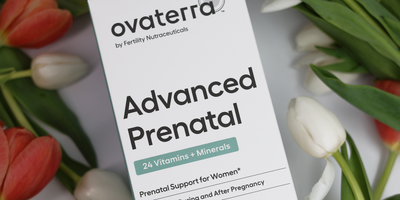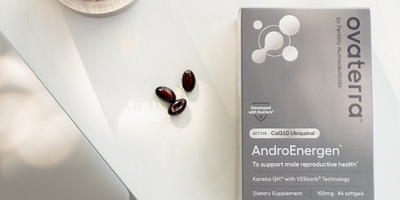Higher-quality embryos have a better chance of implantation and pregnancy – and that’s why doctors and embryologists measure embryo quality in clinical settings. It helps doctors give more accurate prognosis. When there are multiple embryos to choose from, knowing embryo quality also lets you compare them and select the one with the best potential to lead to a pregnancy.
However, getting a “grade” for your embryos can be confusing and stressful for many. So, let’s demystify embryo quality and embryo grading.
Embryo quality’s impact on pregnancy rates
First, just how much does embryo quality affect your chance of pregnancy? The answer may be "a lot."
For example, a 2018 study analyzing over 900 embryo transfers found that a blastocyst-stage embryo with an “excellent” grade was nearly twice as likely to lead to a pregnancy (65%) as an embryo with a “poor” grade (33%). The success rates rose as the quality of embryo rose, even though all of the embryo included in the study had normal chromosomes. The difference carried over to the likelihood of live births, too.
Day-5 embryo quality, pregnancy rates and live birth rates
The image below summarizes the findings in the 2018 study by Zhao, et al [Overall blastocyst quality, trophectoderm grade, and inner cell mass grade predict pregnancy outcome in euploid blastocyst transfer cycles. Zhao YY, Yu Y and Zhang XW. Chin Med J (Engl) 2018;131(11):1261-7.]. Note how the authors categorized different 3-letter embryo grades into poor, average, good and excellent. (Don’t worry about these detailed grades for now – we’ll get to them shortly.)
Embryo quality chart with pregnancy rates and live birth rates

Other studies report different pregnancy and live birth rates, but the general trend holds: The better the embryo quality, the higher the pregnancy and live birth rates.
Are there standards for embryo quality?
Measurements of embryo quality have a longer history than egg quality, which doesn’t have a universally accepted standard just yet. For embryo quality, there are more or less agreed-upon sets of standards. Many fertility centers, however, do put their own twists on measurement standards.
There are mainly two measurement standards: One standard applies to embryos 3 days after fertilization, while the other standard is used for embryos 5 days after fertilization. In both cases, how the embryos look (morphology) and how it’s progressed through developmental stages are the two important factors of embryo quality assessment.
Measuring embryo quality on day-3
By day-3 after fertilization, a healthy embryo is at a stage called cleavage stage. At this stage, cells quickly divide and multiply, but overall, the embryo doesn’t grow much.
1. Number of cells
On day-3, a healthy embryo has 6 to 10 cells, but embryologists think that 8 cells are the best at this stage, as it has been shown that 8-cell embryos on day-3 have the highest potential for live births.
Some healthy embryos can have odd number of cells (like 3 or 5), which can happen when some cells divide at different times than others. While this alone does not mean that the embryo is of poor quality, combined with other factors, it can be a sign that the embryo’s developmental potential is not optimal.
2. Morphological features
How the embryo looks overall, and how the cells look, are also an indicator of its quality. On day-3, embryologists like to see:
- Smooth cytoplasm (the gelatinous fluid that fills the inside of cells);
- Not too many vacuoles (fluid-filled pockets);
- Fragmentation under 20% (breaking-off of parts of a cell when it divides); and
- Movement toward compaction (where cells move closer together to prepare for the next stage of development).
Unlike the number of cells, however, these morphological observations are somewhat subjective. Many embryology labs also have their own set of morphological features to look at, based on their experience.
Day-3 embryo grading
Typically, each embryo’s grade is expressed with the number of cells in numbers, followed by a letter grade representing the morphological quality. For example, an 8-cell embryo with an “A” (excellent) grade for morphology would have 8A as its overall embryo grade. (Some centers use a number to express the morphological quality.)
Specific terminologies used to describe the grade of an embryo can vary between clinics and laboratories. Combined with the somewhat subjective nature of morphological observations, this can make laboratory-to-laboratory comparison somewhat confusing or difficult.
Measuring embryo quality on day-5
By day-5 after fertilization, a normal embryo has typically reached the blastocyst stage. This is a stage where the embryo has a clear separation between the cells that gather on the inside and those that form the outer layer.
- Inner cell mass is the group of cells that gather together, inside of the trophoblast layer. The inner cell mass (ICM) eventually becomes the fetus.
- Trophoblast is the outer layer of a blastocyst-stage embryo. Appearing after about 4 days from fertilization, trophoblast provides nutrients to the embryo, and later develops into the placenta. Trophoblast cells also play an important role when the embryo implants into the endometrium.
Just like they do on day-3, embryologists evaluate the morphological features of the embryo and its developmental stage. However, because the day-5 embryos are more structurally advanced than a day-3 embryo, the embryo quality assessment at this stage includes 3 factors.
1. Amount of growth (expansion)
The first thing embryologists look at in a day-5 embryo is how much it has expanded. The degree of expansion is expressed in numbers, and comes at the beginning of the day-5 embryo’s quality grade. Here, 6 indicates an embryo that is most developed, and 1 indicates one that is lagging behind.
An embryo’s expansion is measured in two ways: The size of what is called a blastocoel, and how close the embryo is to hatching.
- Blastocoel refers to the area of the embryo that’s not occupied by the inner cell mass or the trophoblast. Essentially a cavity filled with fluid, as the embryo grows and expands, blastocoel occupies more space of the embryo.
- At the blastocyst stage, some embryos’ inner cell mass and trophoblast cells start to push against the embryo’s outer shell, called zona pellucida. As the embryo continues to grow, its outer layer – the trophoblast cells – start to hatch out of zona pellucida. Eventually, the entire blastocyst will emerge out of the zona pellucida, ready for implantation in the uterus.
Embryo grades measuring expansion
Here is a table showing an embryo's grade and which stage of expansion the blastocyst is:

Interestingly, an embryo with a grade of 6, meaning a completely hatched embryo, may not be the best-quality embryo on day 5. Some embryologists consider them to be moving too quickly, preferring blastocysts that are just hatching out, which would give them a grade of 5.
2. Quality of the inner cell mass (ICM)
The next item under the microscope – literally – is the quality of the inner cell mass. Since the ICM becomes the fetus, embryologists pay close attention to the structural integrity of the ICM.
The quality of the ICM is expressed in letters, and comes after the number that represents the degree of expansion. Here, A represents the best quality and C is the lowest quality.
Embryo grades on ICM
Below, the table shows the embryo's grade, and how the inner cell mass looks to the embryologists:

3. Quality of trophoblast epithelium (TE)
Embryologists also look at the quality of the blastocyst’s outer layer, the trophoblast epithelium (TE). Similar to the ICM, we are looking for many TE cells that are organized into a cohesive structure.
The TE quality is also expressed in letters that comes at the end of a day-5 embryo grade. A is the best; C is the worst.
Embryo grading on TE
This table shows the embryo's grade and how the trophoblast cells look:

What the 3-letter embryo grade means
Combining the 3 aspects of day-5 embryo quality, here is a chart of what an embryo grade at the blastocyst stage can look like:

What embryo quality doesn’t measure
Reproduction is a complex process, and embryo quality obviously doesn’t encompass all of the key factors involved. Even when it comes to the embryo itself, embryo quality measures typically leave out an important aspect: The embryo’s chromosomal integrity and genetic health.
An analysis of over 1,700 blastocyst-stage embryos showed that the morphological features observed under the microscope somewhat correlate with the embryos’ genetic health. However, some embryos with chromosomal abnormalities still developed good-quality ICM and TE, while some chromosomally healthy embryos still failed to show top-quality ICM or TE.
Another key factor that embryo quality doesn’t measure is the uterine environment that facilitates embryo implantation. We know hormonal and immunological changes are necessary for implantation to happen, as well as a proper thickness of the endometrium. A 2020 study, for example, showed that both embryo quality and the thickness of the endometrium are independently associated with the chance of pregnancy and live births.
If I have poor embryo quality, does it always mean low chances?
Not necessarily. An embryo that’s behind schedule can catch up surprisingly quickly. For example, an embryo can go from stage 1 (early blastocyst stage) to stage 6 (completely hatched) in one day. Letting it develop for one more day can make all the difference in its likelihood of implantation and pregnancy.
What’s on the horizon for embryo quality measurements?
Morphological assessments used in embryo quality grading can be subjective. Chromosomal testing (via PGT-A) can be damaging to the embryo and sometimes inaccurate. To improve our ability to understand each embryo’s ability to develop into a healthy baby, scientists have proposed additional ways to measure embryo quality.
One is to analyze the “spent” culture medium where the embryos grow. Some scientists are working to understand the relationship between the embryo’s health and what proteins are produced by the embryos’ genes (proteomics), what metabolic waste materials come out to the medium (metabolomics) and what microRNAs are present.
While the spent media analysis and other alternative methods of embryo assessments may improve embryo assessment, many scientists think that these will be used in addition to the traditional morphology-based embryo grading, rather than replacing it.
Please reach out if we can answer any questions about embryo quality. We are with you.












